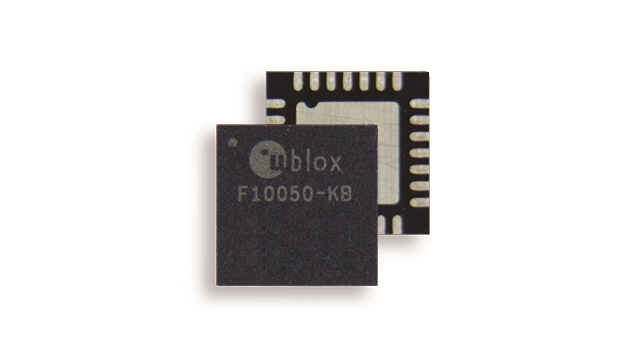위치 추적 및 무선 통신 기술 분야의 세계적 선도기업인 유블럭스(u-blox, 한국지사장 손광수)가 L1 및 L5 밴드를 결합해 보다 향상된 다중경로 저항성과 미터 수준의 위치 정확도를 제공하는 자사 최초의 듀얼 밴드 GNSS(Global Navigation Satellite Systems) 플랫폼인 F10을 발표하며, 다중경로 영향을 줄여 위치 정확도를 향상시키고, 차량의 신속한 위치 파악 프로세스를 간소화 했다.
듀얼밴드 GNSS F10 출시, 다중경로 영향 줄여 위치 정확도 향상
위치 추적 및 무선 통신 기술 분야의 세계적 선도기업인 유블럭스(u-blox, 한국지사장 손광수)가 듀얼밴드 GNSS를 채용해 다중경로 영향을 줄여 위치 정확도를 향상시키고, 차량의 신속한 위치 파악 프로세스를 간소화 했다.
유블럭스는 L1 및 L5 밴드를 결합하여 보다 향상된 다중경로 저항성과 미터 수준의 위치 정확도를 제공하는 자사 최초의 듀얼 밴드 GNSS(Global Navigation Satellite Systems) 플랫폼인 F10을 최근 발표했다.
이 플랫폼은 애프터마켓 텔레매틱스 및 마이크로 모빌리티와 같은 도심지 모빌리티 애플리케이션에 적합하다.
정확한 위치 추적을 위해 GNSS 수신기를 사용하는 애플리케이션이 점점 더 늘어나고 있다.
반면에 현재의 수신기 제품들은 도심 지역에서 제 성능을 온전히 발휘하지 못한다. 위성 신호가 건물이나 가로수 잎에 의해 반사될 수 있는 밀집된 도시 환경에서는 정확하고 안정적인 위치 추적을 위해 멀티패스 효과를 완화할 수 있는 GNSS 수신기가 요구된다.
L5 밴드는 이러한 영향에 대한 복원력이 뛰어나 위치 정확도를 크게 향상시킨다. 매우 안정된 L1 밴드와 결합된 L1/L5 듀얼 밴드 GNSS 수신기는 2m 미만의 위치 정확도(CEP50)를 제공할 수 있지만, L1 밴드만 지원하는 수신기의 위치 정확도는 약 4m 수준이다.
유블럭스 팀은 여러 도시 지역에서 주행 테스트를 수행함으로써 새로운 플랫폼이 GNSS L1 수신기에 비해 위치 정확도가 상당히 개선되는 것을 확인했다.
F10의 펌웨어 알고리즘은 신호가 약한 환경에서는 L5 밴드 신호에 우선 순위를 지정함으로써, 소형 안테나와 함께 사용하더라도 안정적인 위치 정확도를 보장한다. 또한 이 플랫폼은 실시간으로 신뢰할 수 있는 위치 정확도 추정 값을 제공하는 보호 수준 기술을 탑재하고 있다.
셀룰러 모뎀이 GNSS 수신기에 매우 가까이 있으면 신호의 수신에 간섭을 일으킬 수 있다. 일부 F10 모듈 모델(NEO-F10N, MAX-F10S, MIA-F10Q)은 GNSS와 셀룰러 모뎀이 간섭 없이 작동할 수 있도록 하는 견고한 RF 회로를 장착하고 있다.
유블럭스 F10 플랫폼은 이전 세대인 유블럭스 M10 제품과 핀 투 핀 호환이 가능해 쉽게 마이그레이션할 수 있다. 또한 이 플랫폼은 전 세계적으로 이용이 가능한 실시간 온라인 A-GNSS 서비스인 유블럭스 AssistNow를 지원하여, GNSS 최초 위치 결정 시간(TTFF)을 단축하고 전력 소비를 줄일 수 있다.
유블럭스 EVK-F101 평가 키트는 2024년 4월부터 공급 가능할 예정이다.
